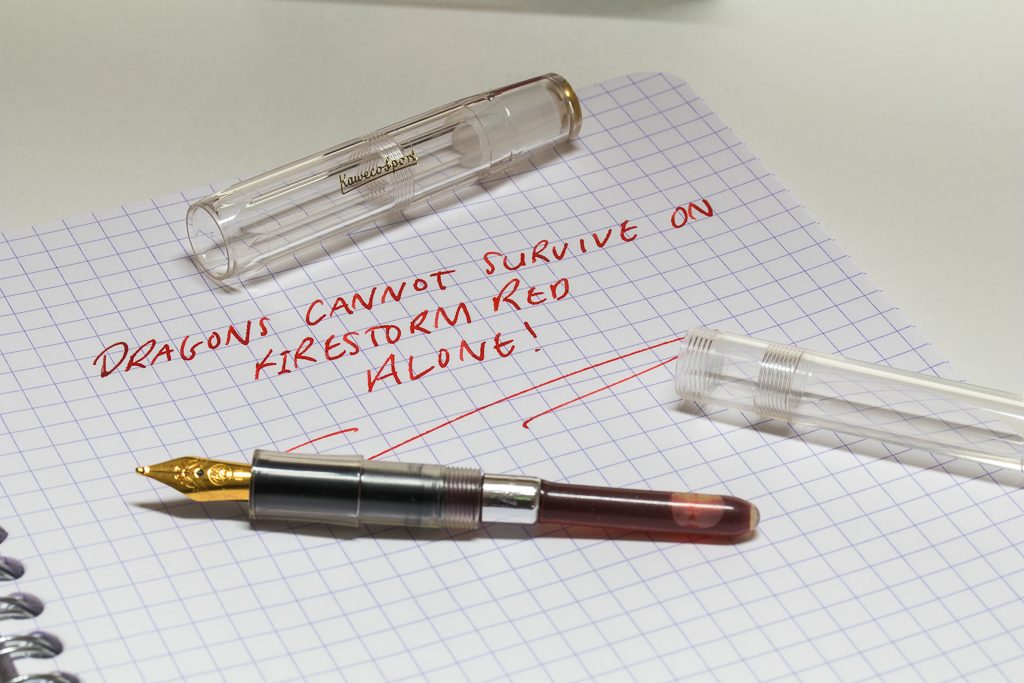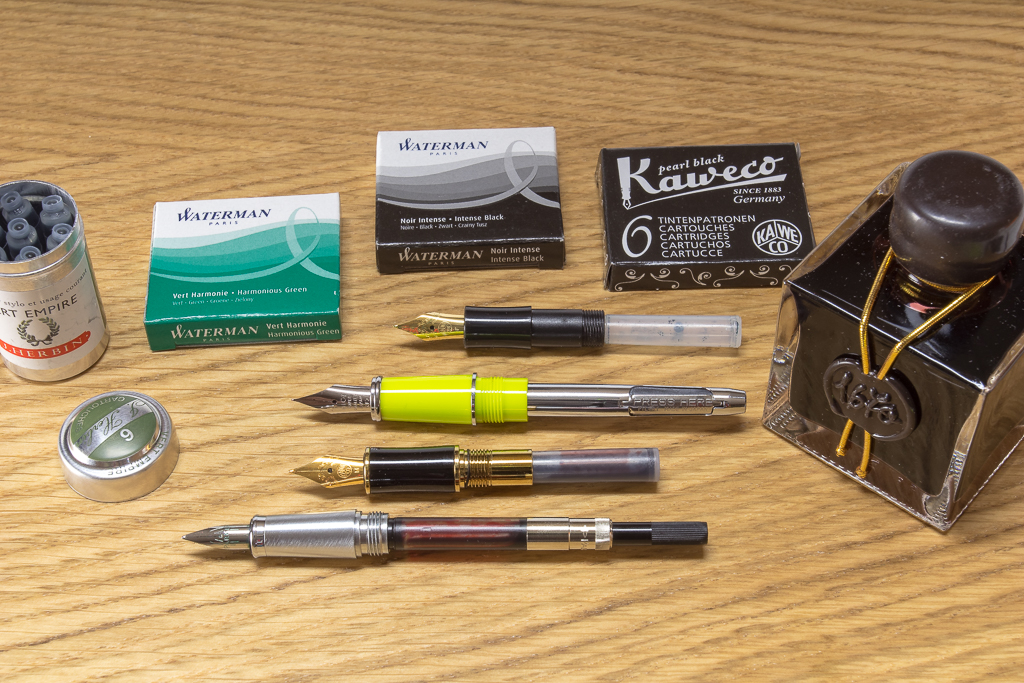This one is for Lyn! After receiving a gorgeous fountain pen as a gift, Lyn came to us with several questions.
One question that she asked was how to get ink into her brand new pen! She had a piston converter and no cartridges. I hope this article helps, Lyn!
Fountain pens that use ink cartridges can also take an ink converter. This little widget allows a fountain pen to use ink from a bottle.
Bottled inks come in a large variety of shapes, sizes and colours and make beautiful collectables. It’s also nice to use ink from different manufacturers. And there is just something special about bottled ink.
Although the international standard fitting is most common and allows you to use many international cartridges and converters, some manufacturers insist on proprietary fittings that only allow their brand of cartridge or converter to be used.
Lamy, for example, is one of these. But like every pen manufacturer, Lamy also sells converters specifically fitted to their pens.
There are several types of converters that can be used and each one has a slightly different filling technique.
Piston Converter
This is perhaps the most common converter in modern fountain pens. It uses a piston that moves up into the converter creating a vacuum that draws ink into the pen. Generally piston converters use a screw mechanism to move the plunger up and down.
Squeeze Converter
A squeeze converter has a bladder that is squeezed and released to create a vacuum that draws ink into the pen. Kaweco supply a very popular squeeze converter for their Sport pens, where a regular piston converter wouldn’t fit.
Plunger Converter
Although the plunger converter is really a type of piston converter it is quite distinctive and deserves its own mention.
The plunger converter doesn’t use a screw mechanism. You simply pull the plunger to draw into the pen and the ink follows. Noodler’s Ink fountain pens often have built in plungers and Kaweco also supply a small plunger converter for their Sport pens.
Here’s the process for filling a fountain pen that uses a converter:
(Hint: Have your bottle of ink open before you start and make sure you have plenty of kitchen towel ready and close by to clean up any messes).
- Unscrew the barrel from the nib section. If your pen already uses a cartridge then remove that and give the pen a quick clean. Attach the ink converter to the pen the same way that you would a cartridge. Either use a converter from the pen manufacturer itself or one that has the same fitting.
- Flush the air out of the converter. For a piston converter simply screw or push the plunger down to the bottom of the converter. For a squeeze converter, grasp the bladder in two fingers and …. Squeeze! Hold that bladder so the air stays out.
- Dip the nib into the ink bottle until the breather hole is completely submerged.
- Keep the nib submerged, then draw ink into the pen. If you use a screw-type piston converter then screw the plunger up into the converter. For a plunger-type, pull back on the plunger and if you use a squeeze converter simply release the bladder that is clasped firmly in your fingers! The vacuum effect will draw ink into your pen.
- Remove the pen from the bottle and clean off the nib and section of any residual ink, reassemble the pen and you are good to go!

Watch out for some gotchyas:
- If you are trying to fill the pen and no ink is being drawn into the converter then air is being aloud to get into the converter instead – you may have to dip the nib section a little deeper into the ink to remove any air holes.
- If your converter comes out partly full, repeat step 3 and 4 once or twice more.
- Created a horrendous mess? Fear not – the more you use a converter the better you will get at filling it!
Welcome to the wonderful world of bottled ink! Cartridges are good but by using bottled ink you have access to a range of inks you might never have tried otherwise.

Graeme, thank you so much! Lyn.